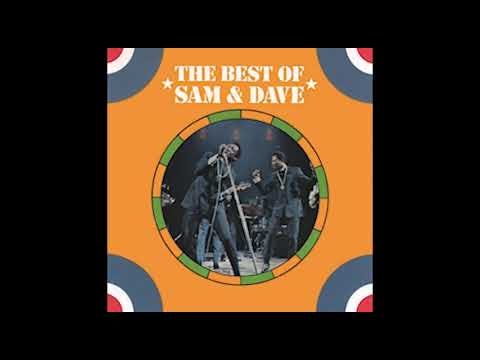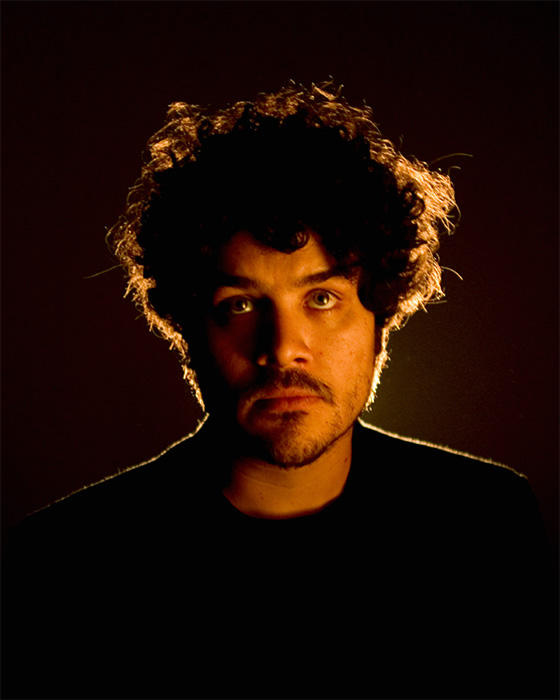Hats Off to Roy Harper: 5 Songs That Name-Check Other Musicians
This week's songs are from Richard Swift, the Commodores, Minutemen, fIREHOSE, and Lightning Bolt
Another bonus track this week, in tribute to Sam Moore of Sam & Dave. They were about as famous for their long-standing feud as they were for their electric live performances.
Sam & Dave - “Goodnight Baby”
I used to live around the corner from a cozy neighborhood bar that had a great jukebox—as eclectic as it was limited. One of albums in it was The Best of Sam & Dave. Soul music is underrated as hang-out music. I make that association because of Sam & Dave and that jukebox. RIP Sam Moore.
In a pretty fluid segue, this week’s entry has a lot to do with paying tribute to musicians…
After the fluid opening track “Wading in Waist-High Water,” the first time you really hear Robin Pecknold’s voice on Fleet Foxes’ Shore, it is a bright burst out from the thicket of a pulsing orchestra: “For Richard Swift…” It’s striking every time I listen to it. In the song “Sunblind,” Pecknold goes on to name-check, reference, and pay respects to many of his music heroes. It’s earnest. It’s accepting of loss, but life-affirming—full of the joy Pecknold feels about the work they’ve left behind. It’s easy to share in that joy when he’s singing about it.
"I’m looking up at you there, high in my mind
Only way that I made it for a long time
But I’m loud and alive singing you all night”
Pecknold isn’t the only singer to honor Swift through song. Kevin Morby’s “Sundowner” is an elegy for a number of deceased friends and heroes; along with Swift, Morby honors the late Jessi Zazu and Anthony Bourdain.
Musical tributes to personal favorites, or random name-checking in lyrics, is common practice. I could probably do just songs named after other musicians for a full year of entries. It’s a way of celebrating one’s heroes, or if you’re an artist of a certain caliber, turning your audience on to artists outside of their radar.
Here are 5 songs that are named for—or about—other musicians. And we’re starting with one by Richard Swift.
“Most of my recording techniques come from looking at photos on the inside of Sly and the Family Stone or Beatles LPs, or from watching Sympathy for the Devil and thinking, 'Oh! That's where they put the mic!'" - Richard Swift
Richard Swift - “A Song for Milton Feher”
Richard Swift died of complications from alcoholism in 2017. A recent career retrospective 4 Hits and a Miss was released in late 2024. It’s something of a Greatest Hits for someone who never had a hit of his own. It’s fantastic; it’s full of fun and playful piano-based pop. But that description is also a bit reductive. Swift’s music brings to mind everything I like about Harry Nilsson. The attention to melody above all else. The way he plays with his own voices in overdubs—it’s clearly the music of one really talented guy goofing around and playing for himself. Check out “Lady Luck” to see what I mean. Swift might not be a household name, but he was a behind-the-scenes magician for a wide range of artists: he was a multi-instrumentalist and touring member of the Shins and the Black Keys. He produced albums by Nathaniel Rateliff & the Night Sweats, Guster, Foxygen, Kevin Morby and many, many others. I only learned of Milton Feher through this song, and I’ll leave the punchline for you to enjoy for yourself.
The Commodores - “Nightshift”
Context can be a funny thing. In my memory this song lived as a staple of easy-listening radio. I’m pretty sure it was even in Lite FM 93.9 TV commercials way back when. It’s a song you hear in Walgreens while waiting to pick up a prescription, or sitting in a dentist chair. Then Springsteen included it in his setlist on his recent world tour, which was the first time he’d really stuck to a setlist (maybe ever?). Taking a storytelling element from his Broadway show, and the theme from his Letter to You album as the last surviving member of his original band, he used it to tell the story of his musical life and paid tribute to his former bandmates and friends.
How does “Nightshift” fit into that? Well, if you’re like me and hadn’t listened closely to the lyrics in the verse—75% of the words are the catchy chorus—then the heard of the song had gone overlooked. In the verses, the Commodores eulogize Marvin Gaye and Jackie Wilson. Both had died in 1984, the year before “Nightshift” was released.
“Marvin
Sang of the joy and pain
He opened up our mind
And I still can hear him say‘Oh, talk to me
So you can see what's goin' on’”
Despite being on their second album without Lionel Richie, the sound and feel of the track has a lot in common with Richie’s solo work: more easy listening than funk, Caribbean-lite syncopated drums, and that sing-along chorus. The song came about with the drum beat first, and the intention to make a soul version of the Righteous Brothers’ “Rock & Roll Heaven.” Lyricist Franne Golde had recently seen Ron Howard’s Night Shift, which delivered the title. Listening with fresh ears, the song is better than both of those sources of inspiration—and Bruce’s cover, too. There’s a weight to it that I hadn’t felt before. And that makes all the difference.
“Growing up the way we did, we never heard jazz until we heard punk, and then we thought it was the same thing…just in an earlier time. For us, not being sophisticated and not knowing the chronologies and coming from Alice Cooper and Blue Oyster Cult, we really didn't understand this. The passion and all of that, we thought it was the same vibe.” - Mike Watt
Minutemen - “Bob Dylan Wrote Propaganda Songs”
There are three correct answers to the question “What is the Greatest American Rock Band?”: Creedence Clearwater Revival, R.E.M., or Minutemen. If you have a challenge to that, I’m happy to listen to your argument and then I will tell you why you’re wrong.
There are many songs that name check Dylan or include his name in the title. He even wrote a few himself. This isn’t even the only Minutemen song to mention Bob. On first pass it could be read as a provocation or a dismissal. After all, this was a highly principled punk band emerging around the time Dylan was in his Christian era. But it’s quite the opposite. Bassist and songwriter Mike Watt saw Dylan as a hero. Watt wrote the song as a commitment to himself, giving himself permission to speak his mind through his music. As he put it, "I was starting to worry. ‘Are my songs starting to sound too sloganeering?’ And then I thought, 'Hey Bob Dylan, his stuff was almost as vital as propaganda.'" Cue that ripping bass…
fIREHOSE - “In Memory of Elizabeth Cotten”
After guitarist and singer D. Boon died, Minutemen superfan Ed Crawford looked up Mike Watt in the phonebook and convinced him to form a new band. Very 1980s story. Very punk story. They named the band fIREHOSE after a Bob Dylan reference, same with the title of this album (if’n). But the band pictured on the cover isn’t fIREHOSE, Dylan, or Minutemen; it’s Husker Du. This song is probably the most aesthetically beautiful song ever released on SST Records. Released in 1987, the year she died at age 94, it is a tender tribute to the folk guitarist Elizabeth Cotten. It references her most famous song in both lyrics and music.
Cotten herself had an interesting path to prominence. She was a lefty who taught herself to play a right-handed guitar so her older brother wouldn’t catch on that she was using his guitar. For most of her life she was a domestic worker until a family she was working for heard the songs she was making up, and asked her to play some. This happened to be the Seeger family. The through-line from the origins of American folk music to punk rock is not a winding path or series of branches. It is a straight line.
Lightning Bolt - “Don Henley in the Park”
For most of “Don Henley in the Park,” the drumming is a quarter of the speed typical of a Lightning Bolt song, and modified bassist Brian Gibson is playing up on the neck, leaving out the low-end thrust the noise rock duo are otherwise known for. The song is on Sonic Citadel, which also includes song titles referencing Van Halen and Husker Du. This is Lightning Bolt at their most accessible. Take that as a warning or an endorsement, but there’s no real middle ground. On first pass, it sounds like barely-structured noise. But as a thought exercise, consider the analogy of heavy metal to jazz. (If you ask Mike Watt, they are already the same thing!) Metallica being the most popular and accessible entry point into heavy metal—your Miles Davis (The Black Album is metal’s Kind of Blue)—then Lightning Bolt would be metal’s Sun Ra. They take key ingredients of the genre, shake it up in a jar, and push it as far out as it can possibly go. I’ll be the first to admit boundary pushing tends to be something you respect more than enjoy. But when’s the last time you pushed yours?
As live performers, drummer/singer Brian Chippendale barks into a microphone sewn into a bizarre mask while he frenetically attacks the drum kit, throwing his head around, and—I assume—keeping good time. The pulsing energy they create is an assault on your senses that just doesn’t register the same way unless you can feel it in your sternum.
Thanks for reading. Enjoy the listening.





Pulsing energy is a good description for the lightning bolt track - thanks for the recommendation there.